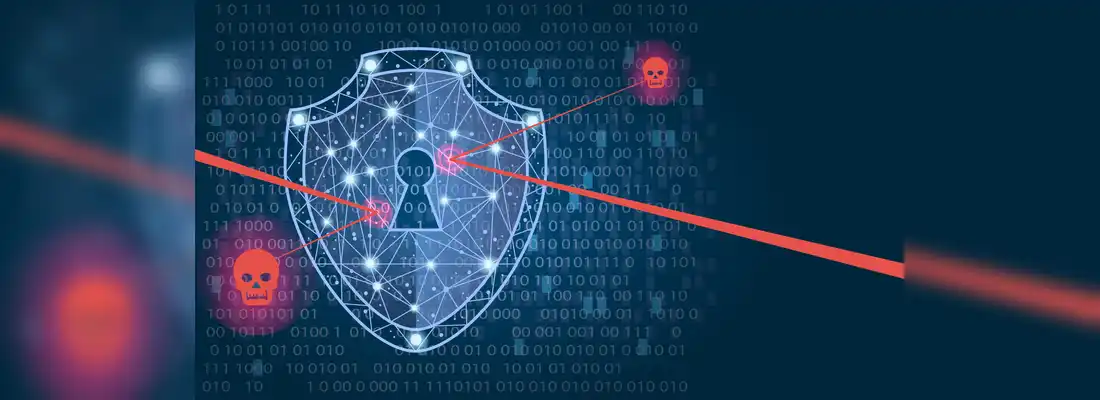Date: 21 November 2025
Building Crypto-Agility
Organizations must adopt adaptable cryptographic systems to respond rapidly to emerging threats. Preparing in advance lowers the risk of potential security breaches.
Decoupling cryptographic functions from applications
Separating cryptographic functions from applications allows IT teams to respond efficiently to new threats. This approach makes it easier to replace outdated encryption algorithms without revamping entire systems. It reduces downtime and minimizes interruptions to business operations.
Businesses can incorporate abstraction layers or APIs that manage encryption tasks independently. By doing this, companies get ready for future changes in post-quantum cryptography standards. This adaptability saves time and resources as cybersecurity keeps pace with quantum computing advancements.
Ensuring flexibility for future algorithm updates
Flexibility is essential in ensuring encryption systems remain prepared for evolving cyber threats. Preparing IT systems to adapt quickly can save time and resources in the long run.
- Test cryptographic solutions regularly to confirm compatibility with emerging standards. Consistent testing helps avoid unexpected vulnerabilities.
- Choose flexible architectures that allow swapping algorithms without overhauling entire systems. A flexible design reduces downtime during updates.
- Implement combined frameworks incorporating current and post-quantum cryptography (PQC). This provides immediate security while ensuring a smooth transition later.
- Train IT teams on algorithm changes and integration processes to reduce skill gaps when updates arrive. Training today shortens response times tomorrow.
- Collaborate with cryptographic experts or vendors who actively monitor advancements in PQC standards and tools. Partnerships strengthen protection against unknowns.
- Audit software dependencies to flag hardcoded algorithms that hinder future upgrades. Adaptable systems avoid legacy traps blocking progress.
- Prioritize strong governance policies requiring periodic evaluations of cryptographic practices across departments or services.
These steps strengthen a system's ability to adapt while safeguarding data integrity against quantum-era threats without disrupting operations prematurely!
Assessing and Prioritizing Current Systems
Start by pinpointing encryption methods vulnerable to quantum attacks. Focus on protecting assets that could cause the biggest headaches if compromised.
Identifying vulnerable cryptographic systems
Every business managing sensitive data must assess its cryptographic systems. Quantum computing presents a significant challenge to traditional encryption methods, making this task essential.
- Examine all data storage and transmission methods. Check how your organization safeguards files, emails, and communication channels. Update outdated practices promptly.
- Analyze current encryption protocols like RSA and ECC. These are highly susceptible to quantum-powered attacks, which can compromise them faster than conventional threats.
- Inspect third-party software and tools utilizing cryptography. Confirm if vendors are preparing for quantum-resistant alternatives or have plans for post-quantum cryptography adoption.
- Identify older systems still in use. Legacy systems often rely on weaker encryption standards that may already be vulnerable to both classical and emerging threats.
- Review the protection of critical assets such as financial records or intellectual property. Prioritize systems protecting these resources as they are common targets for cybercriminals.
- Examine your supply chain security measures for vulnerabilities in cryptographic links between partners or providers handling shared data access.
- Conduct regular penetration testing on current algorithms to simulate potential attacks, identifying weaknesses before malicious actors exploit them.
- Train IT teams to detect signs of weak encryption implementations within existing structures before they develop into significant security issues.
- Follow updates published by organizations such as NIST regarding quantum-safe standards; adhere to their recommendations as these evolve to secure critical infrastructure effectively.
- Work with cybersecurity professionals experienced in quantum-resistant solutions if internal resources lack expertise in this area, addressing gaps beyond your team’s abilities without hesitation.
Prioritizing sensitive data and critical infrastructure
Protecting sensitive data and critical infrastructure requires careful planning. Businesses must address the most vulnerable assets to stay ahead of cyber threats.
- Identify valuable data, such as financial records, personal information, and intellectual property. These are often the primary targets for attackers.
- Pinpoint systems that control essential infrastructure like power grids, water systems, or communication networks. A breach here can cause widespread damage.
- Assess which encryption methods protect this information. Weak algorithms like RSA and ECC may no longer hold up against quantum decryption.
- Map out potential access points that hackers could exploit, including outdated hardware or unauthorized devices across your network.
- Organize data storage by importance to limit exposure during an attack. Keep sensitive information in separate environments.
- Conduct regular vulnerability scans on software and hardware, protecting essential infrastructure. This helps find weak spots before they become problems.
- Focus on updating defense protocols around vital assets first instead of overhauling less important systems immediately.
- Rotate encryption keys regularly to reduce exposure if a key becomes compromised over time.
- Train employees who manage sensitive data about current cybersecurity risks and best practices for staying secure at workstations or remotely.
- Record all findings during assessment phases in case regulatory audits require proof of compliance later on.
Planning for a Gradual Implementation
Start small and tackle the most sensitive systems first. Gradually expand efforts to strengthen cybersecurity without overwhelming your IT team.
Using hybrid cryptographic solutions for high-risk systems
High-risk systems require additional layers of protection. Hybrid cryptographic solutions merge existing encryption methods with quantum-resistant algorithms. This dual layer serves as a safeguard, making data more difficult to breach even if classical encryption is compromised.
Such a method enables gradual adjustment without replacing entire infrastructures. Financial institutions and healthcare systems can begin protecting critical assets now while getting ready for post-quantum cryptography in the future. It addresses current needs while effectively preparing for future challenges.
Scaling pilot projects into full deployments
Testing small-scale cryptographic solutions is the first step, but expanding them across your operations marks real progress. Businesses should select one or two high-priority systems to start implementing post-quantum cryptography (PQC). This focused approach limits risks while identifying practical challenges.
Pilot projects often highlight integration issues with existing infrastructure. Addressing these problems early helps avoid larger disruptions during full deployment. Gradual scaling allows IT teams to refine strategies and adapt without overwhelming resources.
Conclusion
Preparing for quantum threats isn’t just smart, it’s essential. Cybersecurity must grow alongside technology to guard sensitive data. By adopting quantum-safe strategies now, businesses can stay ahead of potential risks. The time to act is today; the future won’t wait.








-1.webp)
-1.webp)
